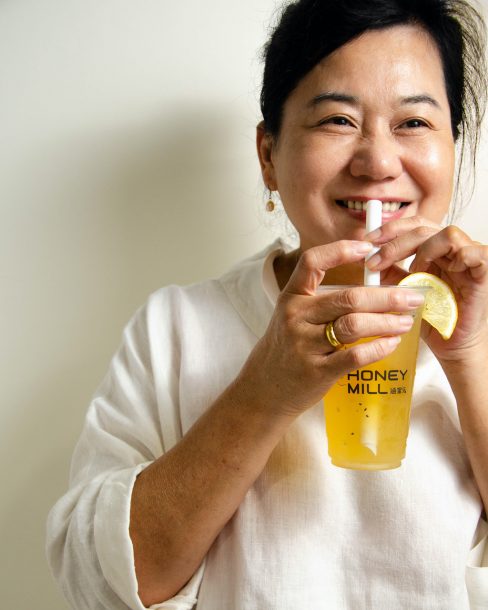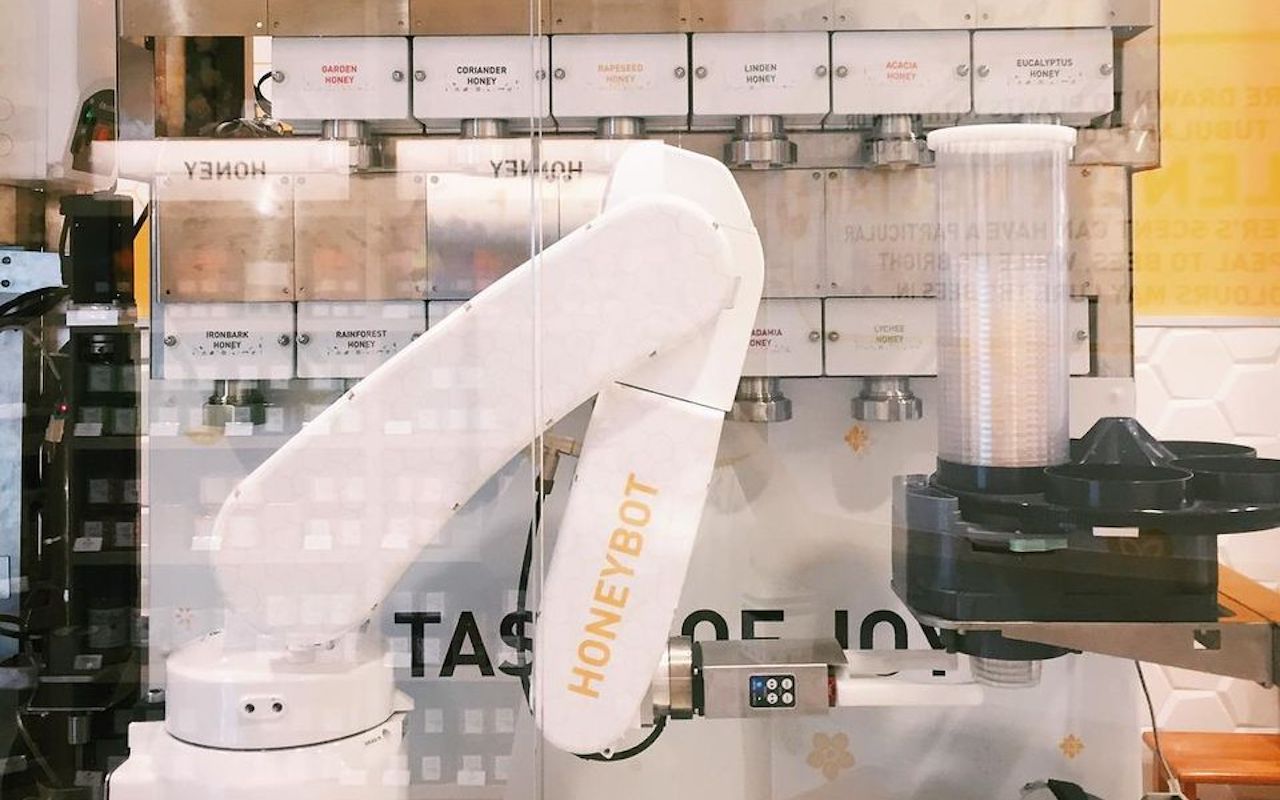*Produced by SilverKris for Honeymill*
Visit local café Honeymill in the basement of Orchard Road’s Paragon Shopping Centre, and you’ll be greeted with a curious sight: an automated robotic arm grasping a cup, sliding along a long row of faucets containing different types of honey and other ingredients, to mix and craft the perfectly balanced honey drink.
Said to be the first robot of its kind in the world, the machine – named Sody – has helped Honeymill founder Sophia Lim save time and money, all while attracting visitors to witness the robot in action.

It helps, of course, that the product of Sody’s labours are delicious to boot: Honeymill’s menu of beverages include novel flavours such as chestnut honey, coriander honey, lavender honey and linden honey – many of which are also available in jars.
Here, we speak to Sophia about developing her signature robot, how AI impacts the workforce and how the business landscape has changed since the ’90s.

What inspired you to establish Honeymill?
I’ve been selling honey since 1997 and was probably one of the first few people to bring Manuka honey to Singapore. I witnessed how Singapore’s retail industry developed and declined, and how heavily reliant shops were on their frontline staff, to the point that it could make or break the company. I also saw how hard it was to hire locals and foreigners for F&B and retail jobs.
I knew businesses had to adapt to survive, so I thought that perhaps I could find a new way for people to consume honey. That’s how I stumbled on the idea of selling honey drinks. Honeymill started with the simple idea of wanting to make it easier for people to consume honey. We do that by selling honey as drinks that consumers can grab on the go and selling them at an affordable price range. We also wanted to introduce the Singapore market to more variants of honey through Honeymill.
Tell us about the process of developing and creating Sody.
While the idea of selling honey drinks seemed practical, they’re not necessarily simple to make. We had to consider how the honey is handled, the temperature of the water used, the proportions of ingredients used and manpower issues. I took a leap of faith and engaged a local engineering firm to build a robotic drink maker. Although many considered my idea crazy, I trusted my gut and followed through. It took nine months to develop the robot. In fact, we were still finetuning the robot on the day before our grand opening.

How does Sody work? How much did you invest into building the robot?
I invested S$200,000 to develop the first generation of the machine. Sody is made to ensure the honey to water ratio is consistent in each cup; increase the speed of diluting honey; cut down long-term operation, manpower and training costs; and inject some fun into the process. It comprises three main parts – a section that dispenses honey, a section that dispenses the toppings and a section that dispenses water and seals the cups.
What happens once an order is placed?
After an order has been placed in our system, the robot will grab a cup from the cup dispenser and collect the honey from the appropriate honey outlet. The honey will then be stirred with water to dilute it. A second robot arm will grab the cup and take it to the topping dispenser – we’ve got honey jelly, lemon, passionfruit and aloe vera. It even cuts lemons into perfect slices. After the toppings have been added, the robot will bring the cup to the water and ice dispenser, filling it to the brim with carbonated, warm or ice water, before taking it to the sealing machine. This entire process takes around one minute and 15 seconds to complete.
What are the benefits of using AI in F&B businesses like yours?
We are of the view that AI is not here to take over jobs or the world, but to complement manual labour and increase productivity. For instance, our staff is able to concentrate on customer service and talk about the wide variety of honey we carry, while our robot makes the drinks. With the robot, we worry less about quality control and hygiene issues. It also allows us to train our workers to improve their interpersonal skills and equip them with new skills such as basic engineering.

How do you create such unique flavours of honey?
It is a common misconception that we create the flavours of the honey. All honey that we use actually contains no added flavours or essences. Our chestnut honey is made by bees that forage on chestnut flowers. Longan honey is made by bees that forage on longan flowers. I’m acquainted with many beekeepers and buy honey from them directly. To ensure utmost quality, we also make sure all our honey has been tested before it’s brought to the Honeymill store.
What else is in the pipeline for Honeymill?
We’re hoping to build a franchise and expand into more markets and regions in the near future. We are also in the process of developing more honey-related confectionery, as well as more honey beverages, using our newly created topping, Honey Pear Crunch. Another dream of mine is to create more robots to serve honey-related takeaway food.
The post How a Singaporean café owner created the world’s first drink-mixing robot appeared first on SilverKris.
from SilverKris

No comments:
Post a Comment